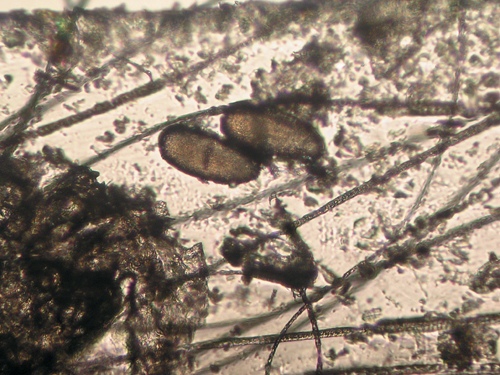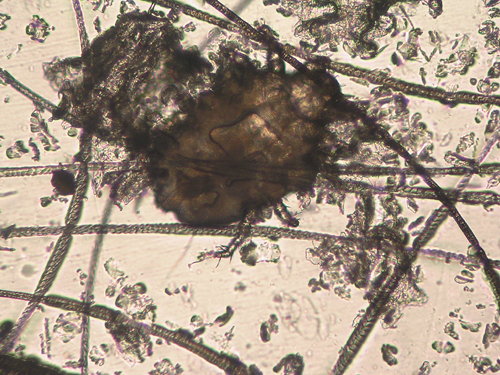Difference between revisions of "Rabbit Medicine and Surgery Q&A 17"
Ggaitskell (talk | contribs) |
|||
| Line 15: | Line 15: | ||
|a1= | |a1= | ||
The most common mites seen in rabbits are the fur mites | The most common mites seen in rabbits are the fur mites | ||
| − | * | + | *Cheyletiella parasitovorax and |
| − | * | + | *Leporacarus gibbus (formerly Listrophorus gibbus), and |
| − | *the ear mite | + | *the ear mite Psoroptes cuniculi. <br> |
Other mites occasionally seen on rabbits are | Other mites occasionally seen on rabbits are | ||
| − | * | + | *Demodex cuniculi, |
| − | * | + | *Notoedres cati, |
| − | * | + | *Trombicula autumnalis, |
| − | * | + | *Dermanyssus gallinae and |
| − | * | + | *Sarcoptes spp. <br><br> |
The mite shown is Cheyletiella parasitovorax. | The mite shown is Cheyletiella parasitovorax. | ||
| − | |l1= | + | |l1=Cheyletiella spp. |
|q2=What are the identifying features? | |q2=What are the identifying features? | ||
|a2= | |a2= | ||
| − | + | C. parasitovorax is a non-burrowing mite; it causes seborrhoea, alopecia and pruritus. Adult mites are large and have hook-like accessory mouthparts. <br><br> | |
| − | + | L. gibbus is also a non-burrowing mite. Adult females are sometimes described as similar to a flea in appearance, with a striated cuticle, dark, sclerotic head and short legs with no clasping adaptations. Membranous flaps arising from the first set of legs attach the mites to a hair. Males have a long adanal process and adanal suckers. <br><br> | |
| − | + | P. cuniculi may be found causing skin lesions. Mites are large, being up to 0.07 mm in length, and may be seen with the naked eye. They have an oval body shape, pointed mouthparts and three jointed pedicles with funnel shaped suckers. | |
| − | |l2= | + | |l2=Cheyletiellosis |
|q3=Which related organism is not generally associated with seborrhoea? | |q3=Which related organism is not generally associated with seborrhoea? | ||
|a3= | |a3= | ||
| − | + | L. gibbus. Clinical signs are | |
*alopecia, | *alopecia, | ||
*pruritus and | *pruritus and | ||
Revision as of 12:29, 25 August 2011
| This question was provided by Manson Publishing as part of the OVAL Project. See more Rabbit Medicine and Surgery questions |
A two-year-old neutered female rabbit presents with some skin scale and mild alopecia over the dorsal interscapular region. The owner is unsure whether the rabbit is pruritic or not. A cellotape impression is examined by microscopy. Eggs are found attached to the hairs, and a single mite is found.
| Question | Answer | Article | |
| Identify the indicated mite and eggs. | The most common mites seen in rabbits are the fur mites
Other mites occasionally seen on rabbits are
The mite shown is Cheyletiella parasitovorax. |
Link to Article | |
| What are the identifying features? | C. parasitovorax is a non-burrowing mite; it causes seborrhoea, alopecia and pruritus. Adult mites are large and have hook-like accessory mouthparts. |
Link to Article | |
| Which related organism is not generally associated with seborrhoea? | L. gibbus. Clinical signs are
Many cases are asymptomatic. |
Link to Article | |

